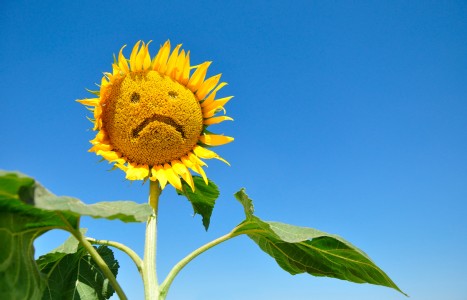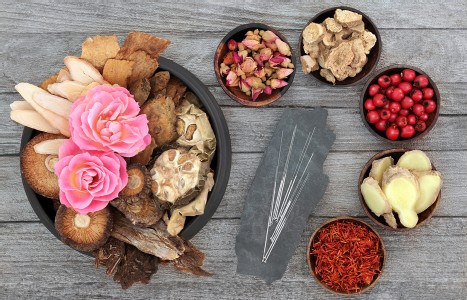Did any of you ever get the feeling in school that it simply was not OK to speak about wanting to be successful? To get into the nitty gritty details of how to make money in practice? Maybe you were even someone like me who was directly told by someone in a position of power that I needed to take what I could get because in private practice, I wouldn’t make money.
Cultivating the Channel Systems: Luo Vessels
Some of the best advice I was given as an acupuncture student was to focus my attention on one school of thought at a time. This included the acupuncture channel systems. The belief was that every channel system has the power to treat everything. However, a deep relationship must be cultivated. We must “unlock” the spirit of the channel within our own understanding.
I find it helpful to approach acupuncture like a shaman. We need to cultivate the channels and points as power objects that can transmit our intention. The needle is a conduit, but the channels are the tools: our spirit allies.
To cultivate means awakening “spirit” to unlock “power.” This is written into Chinese medicine. The Nei Jing speaks of the virtues and soul attributes within the organs (hun and po). The channels are expressions of the organs that aid in the cultivation process. There is power in the channels, as they are filled with spirit.
We are blessed with the wisdom of the ancients transmitted through the names of the acupuncture points, which provide codes to the spirit and function of the channels. As we focus our time and energy on cultivating a particular channel system, the names of the points are a good place to start.
The first channel system I decided to cultivate were the luo vessels. They have few points with evocative names. They are the quintessential “collateral” system, conducting ying-nutritive qi, which includes blood. I knew blood contains shen-spirit, so therefore the luo vessels deal with thought and emotion, which appealed to me.
I realized in approaching the luo that I had to explore what a “collateral” means; and also what ying-qi connotes, as well as shen.
Names of the luo points provide insight into the nature of this channel system. LI 6 (Pian Li: “Veering Passage”) suggests the collateral systems (luo) are side-paths from the primary flow of life (the primary channels). They deal with something that is interrupting the regularity of life: a “Break in the Sequence” (LU 7: Lie Que).
Within the luo we might experience something negative: “Flying Away” (BL 58: Fei Yang), “Insect Ditch” (LR 5: Li Gou). We might also find something empowering and enlightening: “The Upright Branch” (SI 7: Zhi Zheng), “Penetrating the Distance” (HT 5: Tong Li).
Some points suggest a journey into a region of the body: “Passage to the Interior/Exterior” (PC 6: Nei Guan; TH 5: Wei Guan); or something to awaken our senses: “The Great Bell” (KI 4: Da Zhong), “Bright Light” (GB 37: Guang Ming).
As with all Chinese medicine, the channels represent both pathological processes and empowering events.
The luo vessels are manifestations of intense focus on a particular issue or theme. They are conduits of ying qi: blood and fluids, both of which connote feeling. Blood has consciousness: it contains the shen-spirit, whereas phlegm (fluid stasis) is seen as an unconscious feeling state.
The luo manifest states of blood and phlegm (fluid) stasis, which suggest being stuck within a particular feeling state. They can be seen as pathways of obsession, fixation or simply intense exploration of particular themes or experiences in life. They can also be manifestations of trauma: blood stasis.
The names of the luo points evoke shamanic images: going into the “insect ditch” to contend with demons and parasites, or into the “upright branch” to explore morality. They can be paths into the interior of the body, or along the borders of the exterior. They also evoke moments of awakening: the sound of the bell or illumination of the eyes, or lightning that can strike for awakening (an alternate name for LU 7).
Perhaps the most empowering of all luo point names is HT 5 (Tong Li): “To Penetrate Through the Distance.” The name of this point arguably describes the nature of the luo as passages to penetrate into blockages everywhere: a powerful image.
The luo are translated as “connecting vessels.” The meaning of this term is worth examining. The name of another collateral system, the divergent channels, is also worth thinking about: channels (or collaterals) that connect and diverge.
Do the luo manifest a breakdown in connection (LU 7: “Broken Sequence”)? A distraction or diversion (LI 6: “Veering Passage”)? Are they latent holding vessels for parasites/addictions (LR 5: “Insect Ditch”) or morality/judgment (SI 7: “Upright Branch”); issues relating to our family ancestry (SP 4: “Gong Sun: Grandfather Grandson”) or behavioral issues like “fight or flight” disassociation (BL 58: “Flying Away”)?
The Nei Jing says luo vessels hold onto pathology, but cannot treat it. It’s through the process of blood-letting that we promote cathartic release. This is the way these vessels are traditionally treated.
The luo fixate on an issue, creating a shen-stasis: intense focus or obsession. As acupuncturists, we cultivate the power to promote catharsis through treating these vessels.
The luo vessels keep people stuck in particular feeling states. This is supported by the spleen, which manages the blood, keeping things in their place. The spleen “houses” the yi: mindfulness. Fixation of the yi affects the shen. A fixated mind can harass the spirit. Though the luo we can free the mind to release the spirit. This is a skill worth cultivating.
The spleen’s luo (SP 4: “Gong Sun: Grandfather Grandson”) is one of the few vessels that meets with internal organs: the stomach and intestines. The spleen is also associated with the great luo, whose manifestation is prolonged suffering. Family issues, ancestral trauma, and social stress can lead to digestive issues and intense suffering. The luo are therefore implied to be vessels that treat suffering, rooted in the mind.
Another symptom of the great luo is “loosening of the joints,” suggesting long-term fixation causes degeneration. The joints are Curious Organs (aspects of the bones), which connect to the brain and blood vessels. Working with the luo indirectly treats these organs.
The shen circulates through the blood. Luo vessels impact blood vessels, which have a relationship with the other Curious Organs including the brain and bones. By releasing static blood and phlegm, the luo promote longevity and prevent degeneration. They do this through releasing suffering and opening consciousness.
One could say degeneration is rooted in the gut and the chest: the heart/pericardium/circulatory system, stomach and intestines, which the luo vessels visit. To treat the luo treats the root of the degenerative process.
The term collateral can have a denigrative connotation, yet the luo vessels seem heroic. They focus on our issues. They make themselves visible as spider veins and lipomas on the skin, but also through facial expression and complexion. They show us where we are fixated and stuck. The luo are vessels of truth (or denial) which reveal themselves. To be able to work with this is like being a shaman doctor.



